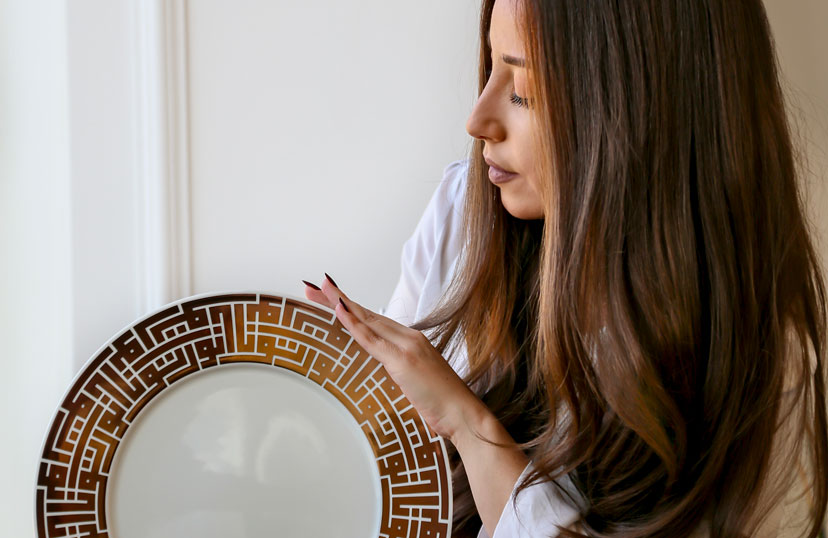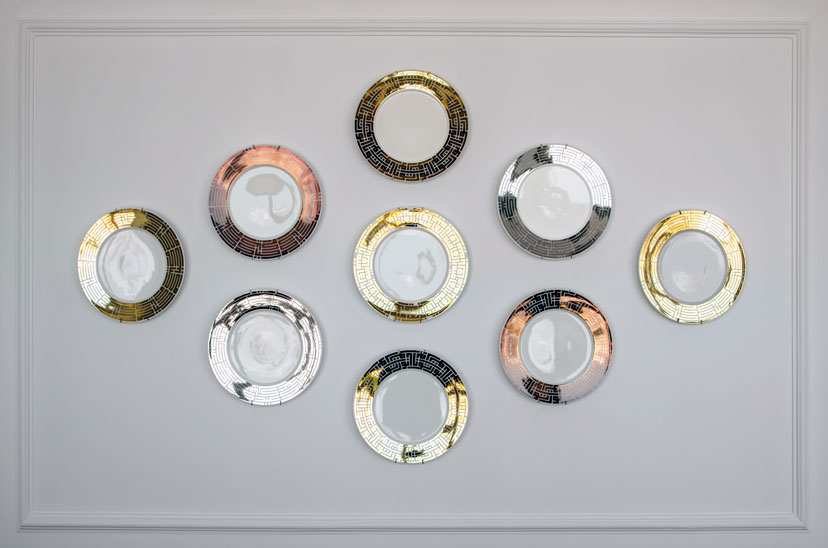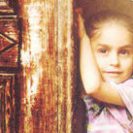Rita Merheb has been a Graphic Design professor at the American University of Kuwait since 2009. Before she came to Kuwait, she taught Graphic Design in various universities in Lebanon. She holds an MFA in Graphic Design, and an MA in “Multimedia for Education.” She also worked in the field of Graphic Design in both Lebanon and Saudi Arabia before she started her teaching career.
As a Lebanese designer who was raised and lived most of her life in the Gulf, Rita was looking for an identity that is well rooted in Arab culture, while embracing the contemporary art movements around the world. Taking her prior understanding of the culture, her research, and the market needs into consideration, her aim was to create art pieces that are inspired by the culture, the generosity, the welcoming spirit and hospitality of the Arab people.
“I have always been fascinated by Limoge porcelain, to the point where I became a Limoge plates collector. Out of this passion of mine, I started thinking of designing my own plates, and last Ramadan, I thought it would be the perfect time to launch my own collection of designer plates. I chose Ramadan because this is the time of the year where people use lots of plates for their futoors, ghabqas, and niqsas. My first collection was basically greeting statements we use during the holy month of Ramadan,” says Rita.
The “Moua’ayada Collection by Rita” معايدة is a set of ten plates with ten distinctive, yet similar and cohesive designs. Each adorned with a different message, written in Kufi Style that fills the outer edge of each plate in a very stylish and innovative design.

Hayyakom, Nawartoona and Bil Aafiah are just some of the statements on the beautiful porcelain dishes. Limited editions of 50 pieces each of Moua’ayada “felicitation” and welcoming statements used by Arabs on daily basis and on special occasions, are printed in Kufi Style on the plates, using luxurious Gold, Rose Gold and Silver ink, on off-white high-quality porcelain—a combination which makes those plates complete, timeless, ultra-chic, classic, and elegant.
The Kufi script is the oldest calligraphy type of the Arabic script that is derived from an old modified Nabatean script and was developed around the seventh century CE. The script was extensively and exclusively used to copy the Qur’an Al Kareem by the orders of the Rashidien Caliph, Uthman bin Affan.
Square or geometric Kufic, like the one used on Rita’s dishes, is a very simplified rectangular style of Kufic widely used for tiling. The Square Kufi, or the Murabba’ Kufi, is very popular these days because the simple lines are very fitting in the modern decoration. It is absolutely straight with no decorative accents or curves shown. Due to this absolute rigidity, this type of script can be created using square tiles or bricks. It is popular in Iran and in Turkey, where in the latter, it was popular as a decoration on buildings during the Ottoman empire.
The design process of the plates required an ingenious and innovative technique through which the designer took the rigidity and straightness of Kufi and reproduced it in a perfectly proportionate rounded look to fit on the circular shape of the plates. A technique that is very time consuming and requires a lot of patience and complicated calculations to get precise dimensions and proportions for the right design. Production wise, the biggest problem was to find a place that can print on plates to deliver high-quality material and finishing.

This was Rita’s latest personal project among many other projects that she works on whenever she has free time from her educational responsibilities. According to the designer, the target audience for this project is a very specific group of people, who have a very artistic touch, a great taste for elegance, and who pay good attention to details. And we agree because we absolutely want them.
Stay up to date with Rita Merheb’s design adventures on ritamerheb.com and Instagram @rita.merheb.











